I am such a snowflake at times that I can hardly watch the first minutes of a horror movie, splatter movies and excessive blood scenes. So that’s why when Elke suggested to go visit the Church of mummies in Urbania, I quickly refused.
I think it’s macabre to collect all those skeletons but Elke and her husband Otto’s luckily went also for me, and here’s their experience:
“Because we were in the corona pandemic, I called briefly beforehand to double check the opening times. The nice gentleman on the phone, our later guide through the crypt, explained the opening times to me and when he heard that I was German, he instructed me to be there a few minutes earlier, but not too early either. I could swear he said it with a wink, because, like many Germans, I tend to show up much too early at such appointments.
But this time we were rather late. We found a parking space somewhere outside the city wall and on the way to the Chiesa dei Morti were able to walk a bit through the cozy town where the architect of St. Peter’s Basilica, Donato Bramante, was born in the 15th century {although some theories now say that he was actully born in Fermignano}. Those who come at the beginning of January may also have the opportunity to visit the beautiful Befana festival in Urbania, which we have already reported on.
So now we are in front of the Cola Chapel, which was built in 1380 by order of Cola di Cecco.
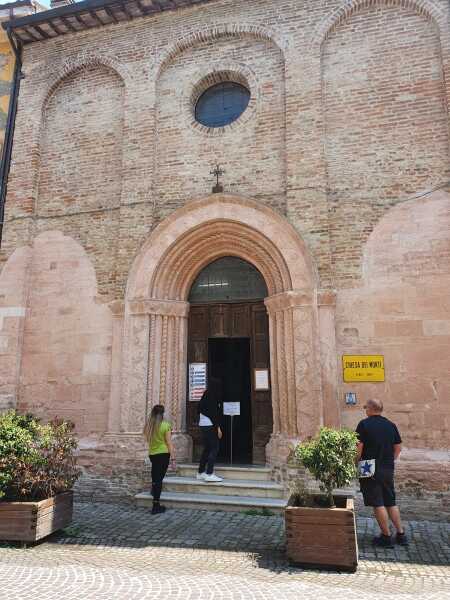
The Brotherhood of the Good Death (Confraternita della Buona Morte) was entrusted with the management of the cemetery and chapel from 1816 onwards. This brotherhood had existed in the Orient since the 5th or 6th century and in 1567 founded a branch in Urbania (which was then still called Casteldurante), to which Cardinal Giulio Feltro della Rovere also belonged. As the name suggests, the brothers had committed themselves to a good death: they cared for the terminally ill, cared for the dying, compiled death registers and tried to find a dignified burial place for the dead.
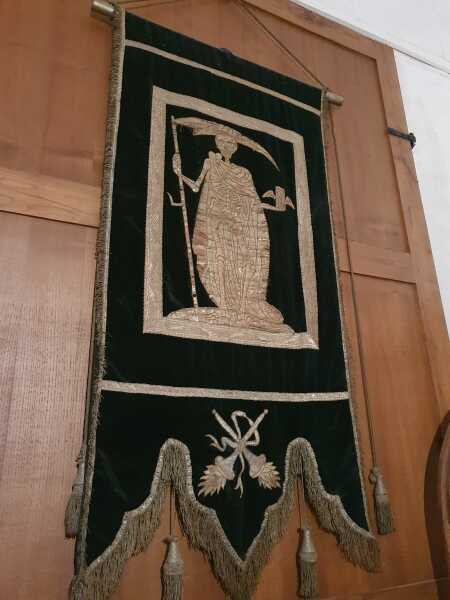
As a result of the Saint-Cloud edict issued by the Napoleonic government in 1804, which provided for cemeteries to be built outside the city walls for hygienic reasons, the inner-city cemetery was closed. The brothers found 18 mummified, largely intact corpses, which they had been keeping in the crypt of the Cola Church since 1833 and which can still be viewed there today.
Nowadays, dividing glass has been let into the wooden showcases to protect the mummies from overly intrusive visitors.
It was only in the last century that an explanation on why these corpses were mummified and so well preserved was found: there was probably a certain fungus in the floor of the old cemetery that caused the corpses to dry out instead of rotting. The skeleton, skin, organs and even hair and genitals have been preserved.
Our guide explains very excitingly and vividly the background to each individual mummy, as they have been discovered by forensic experts, historians and scientists over the course of time:
Here are some examples:

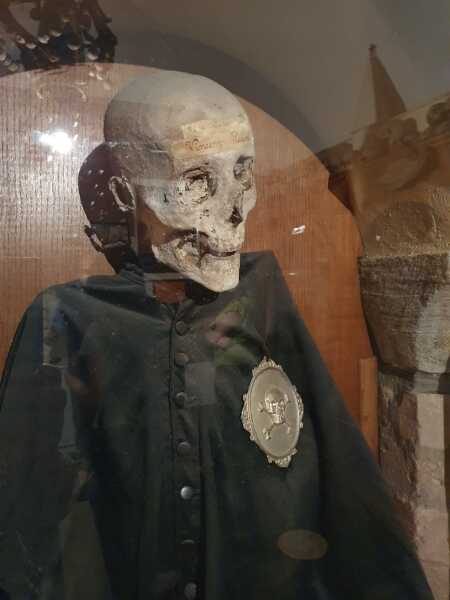

Child and mother of the abbot
Above we see the abbot of the brotherhood, Vincenzo Piccini, in his typical regalia (white robe with black cloak), below his mother and child. These three are mummified, but different from the others: The abbot was still alive when the old cemetery (the one with the mushrooms) was closed. But in order to be just as well preserved in death, he had mixed together chemicals during his lifetime that he and his family were embalmed with after death.
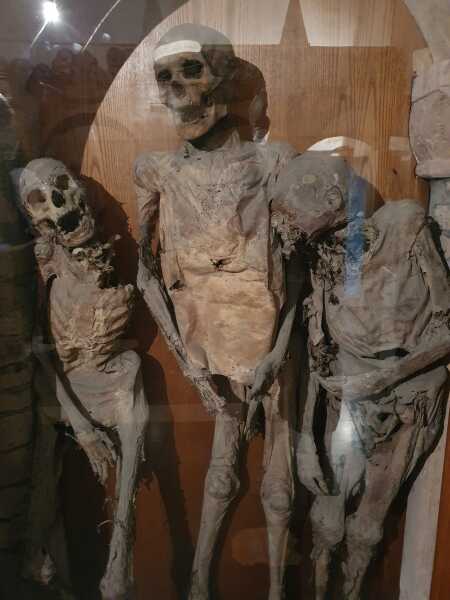
You can probably see a baker up in the middle, says the guide, because his stomach is particularly big. To his left there is a boy with trisomy-21, to his right one with a hump.
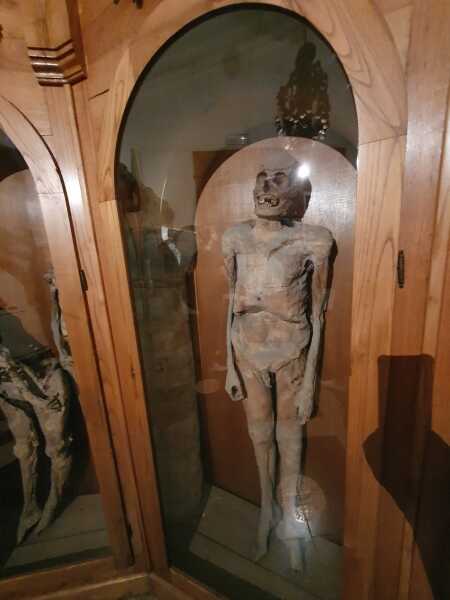
This man was buried alive and suffocated miserably – presumably because he was believed to be dead. In 2002 National Geographic initiated an investigation in which a small hole was drilled into the lungs and soil was found there, thereby confirming the cause of death.
The person in the upper left was hanged and is still in the position in which he was hung, the man to his right was stabbed, because you can still see the opening through which the stiletto penetrated. Our guide talks about a killing after a village festival, but I’m not sure if he tells it just to add a little bit of flair. In any case, he has a glass slide from one of the forensic examinations with a cross-section of the heart, which he holds up to the light and on which you can see the hole that the fatal stab in the heart made.
Others, we are told, were run over by carts, had osteoporosis, diabetes, ate too much red meat or were starved, as their righteous appearance suggests. We get an explanation for each of the 18 mummies and one is more exciting than the other.
About the mummies and surrounded by skulls are some quotes from the Bible, so from the book of Job: on the last day I will rise from the earth or you will lay me in the dust of death.
All in all, a very entertaining and very interesting tour. It wasn’t scary, but we are still happy to be in the fresh air after our stay in the narrow crypt and enjoy a beer on the beautiful square in front of the Bramante Theater.

Useful information:
The Chiesa dei morti is open from Tuesday to Sunday for one hour in the morning and one hour in the afternoon. Admission including a guided tour costs 3 euros per person.
Here you can find the opening times and the telephone number if you want to reserve a guided tour.
I think you can do this via the tourist information office in Urbania, which also has an email address for inquiries.
Our tour was in Italian because we went there without a reservation on a weekday. I have read that you can also get a guided tour in English if you make a reservation by phone. Telephone number: +39 3498195469 (Giovanni) or through the tourist office.”
Well, thank you Elke and Otto for having visited the Chiesa dei Morti also for me: I’ve had difficulties just uploading the pictures to this post.
I hope you, readers, are braver than I am!
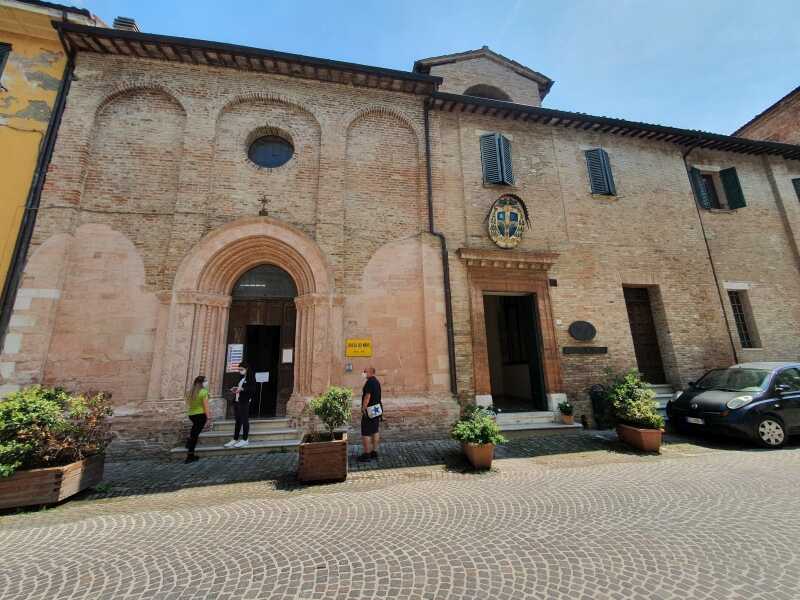
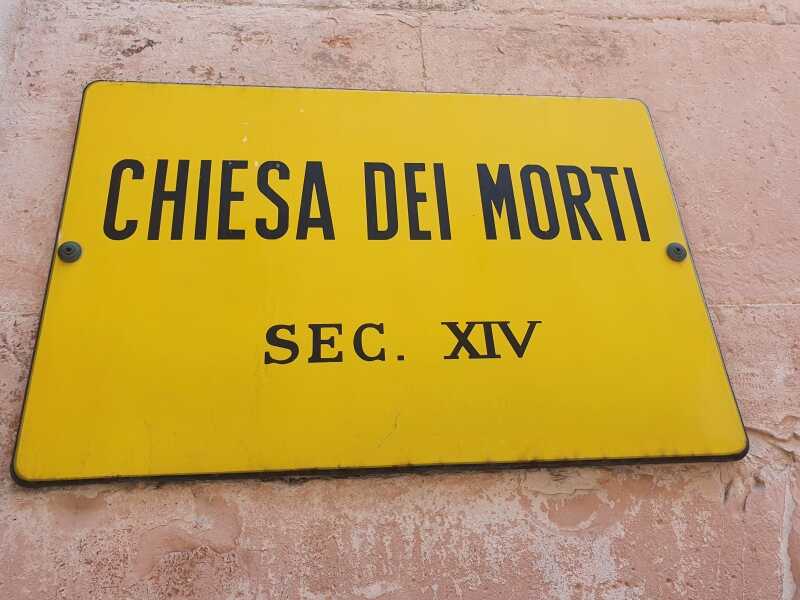
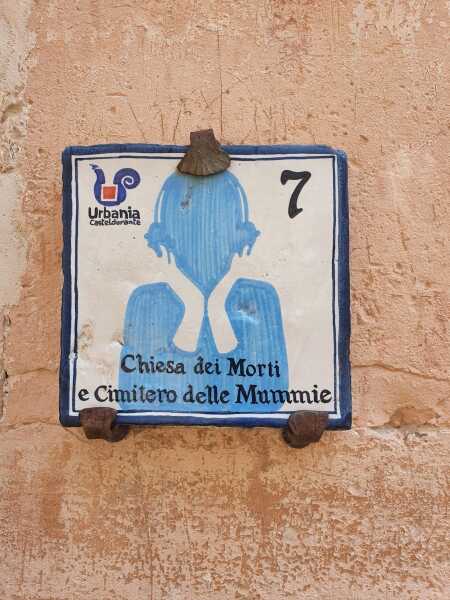
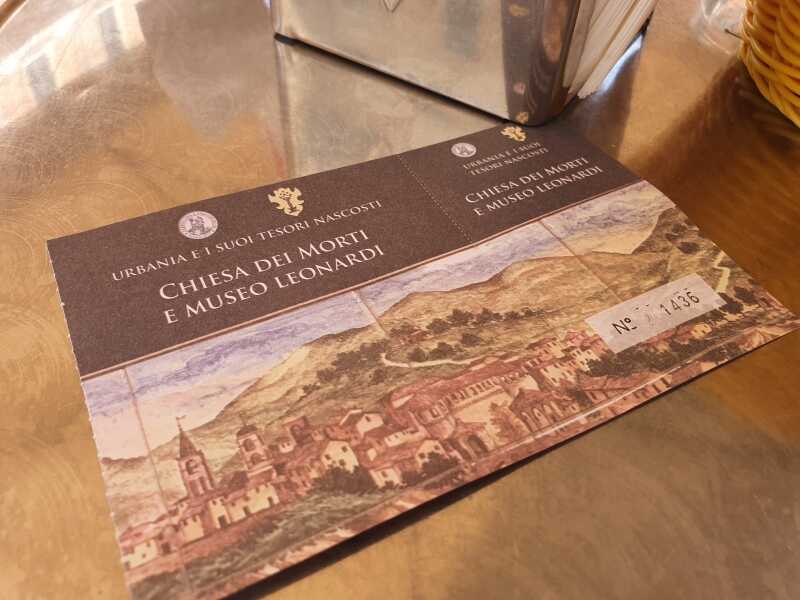

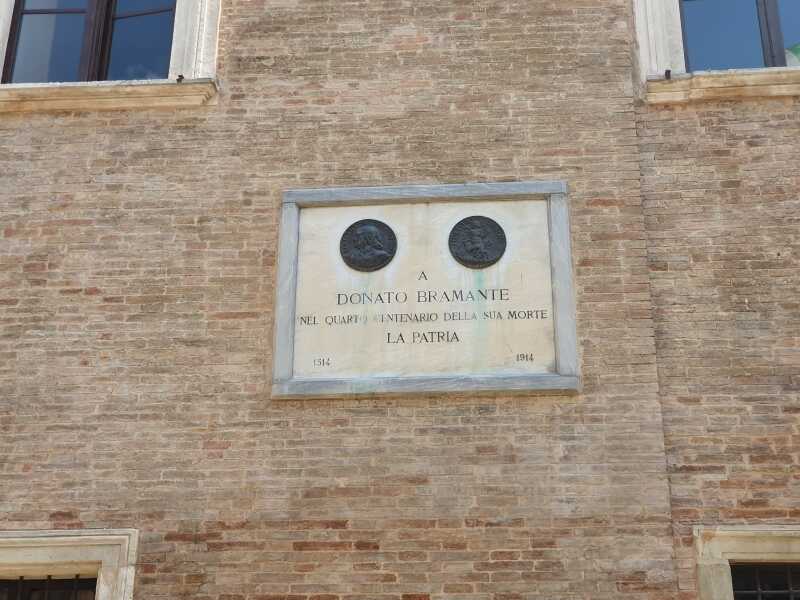
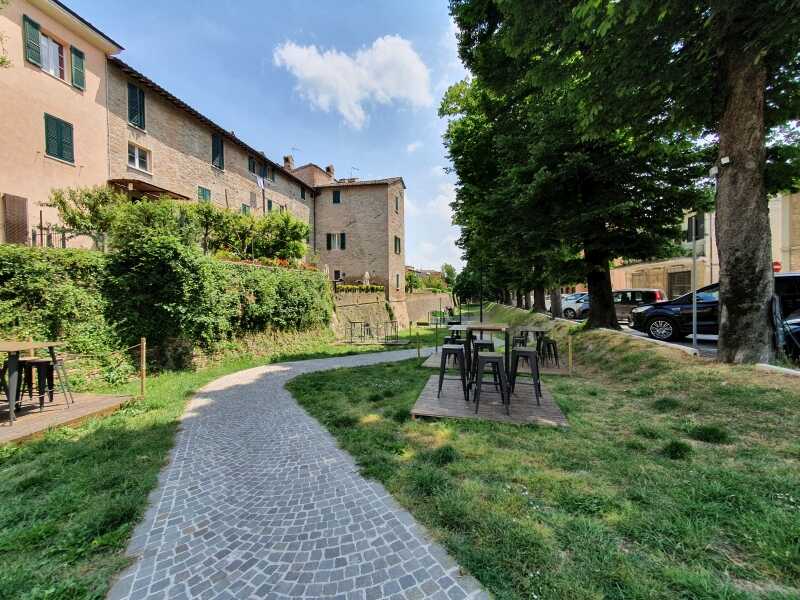
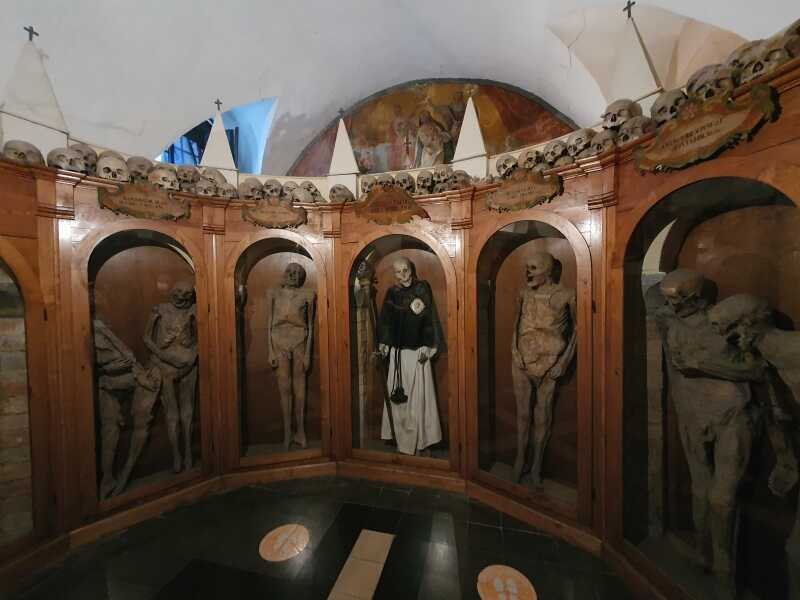
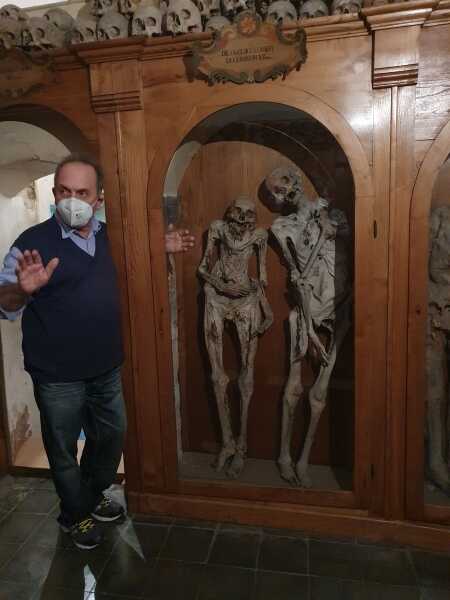


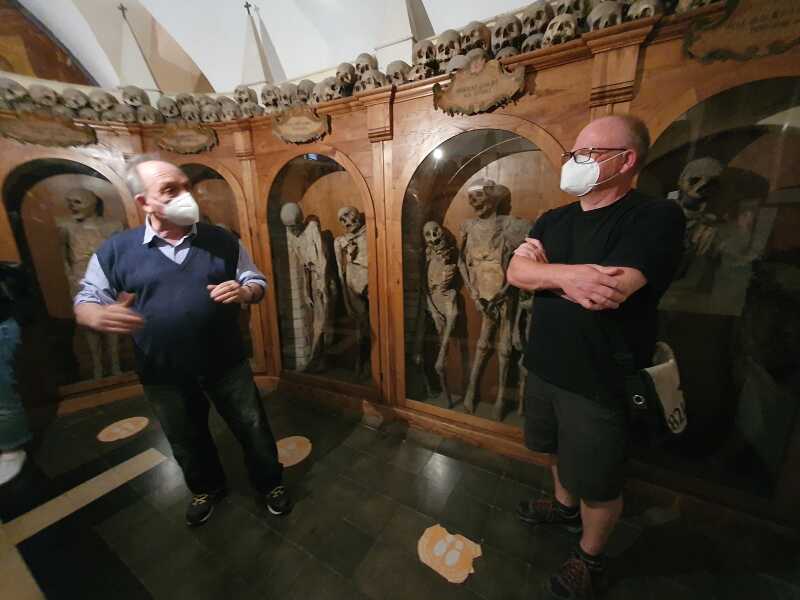
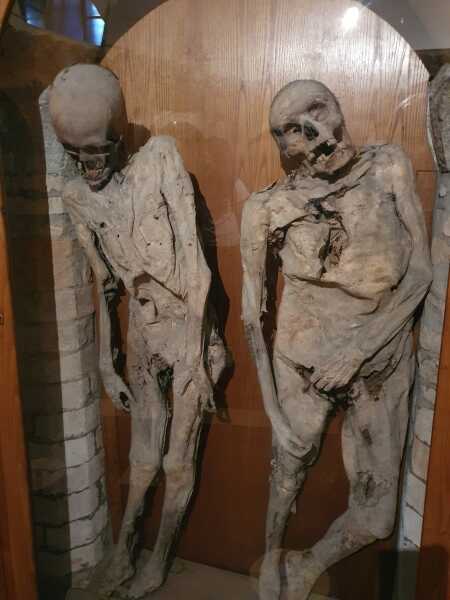
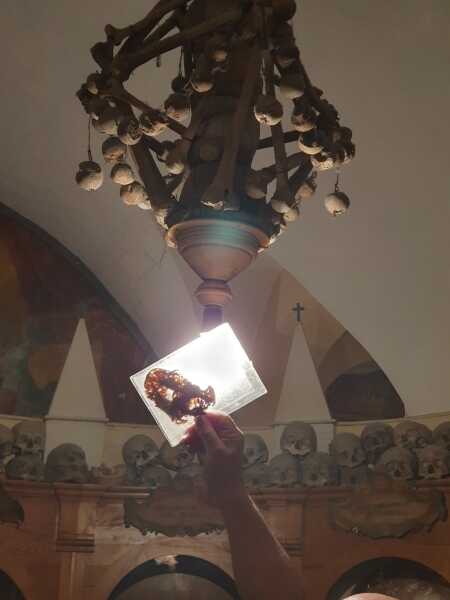
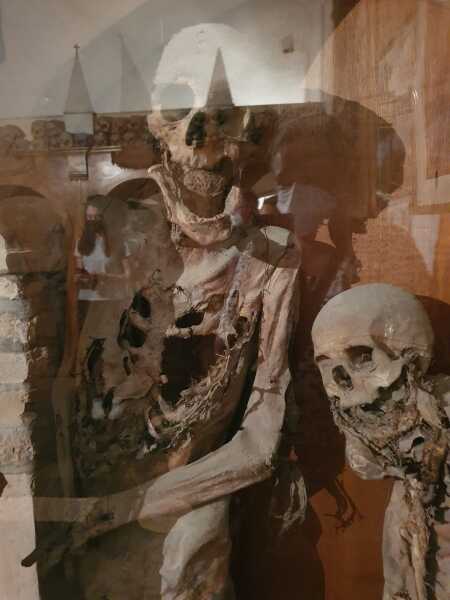
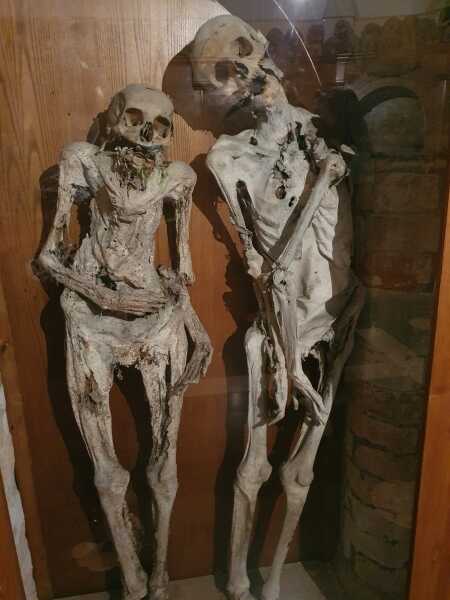
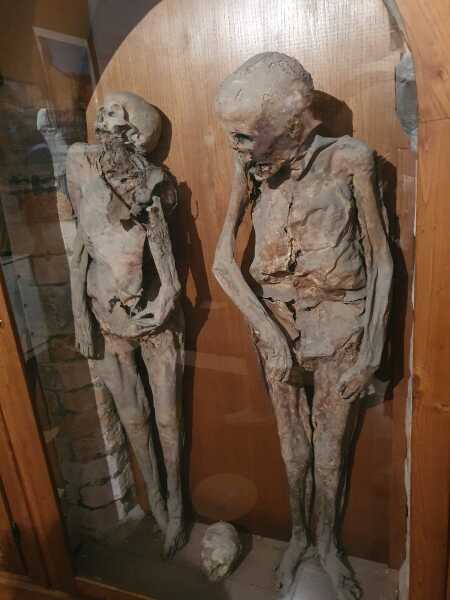
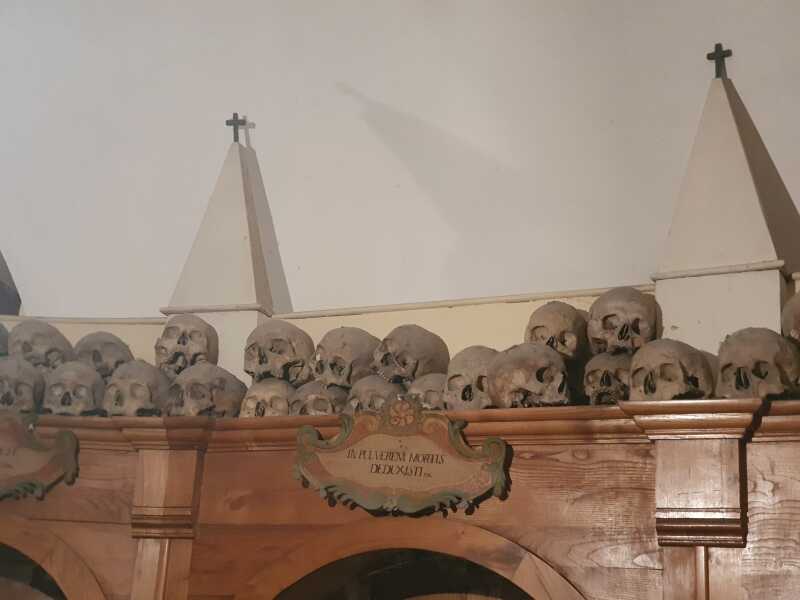
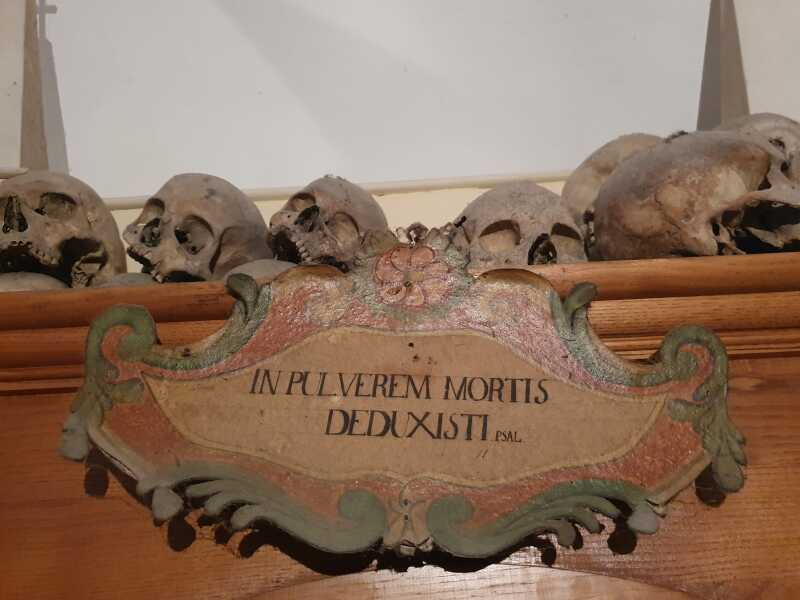

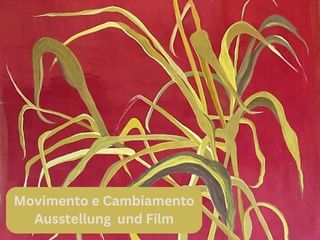
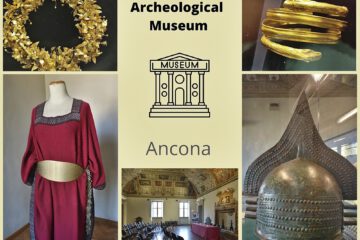
0 Comments